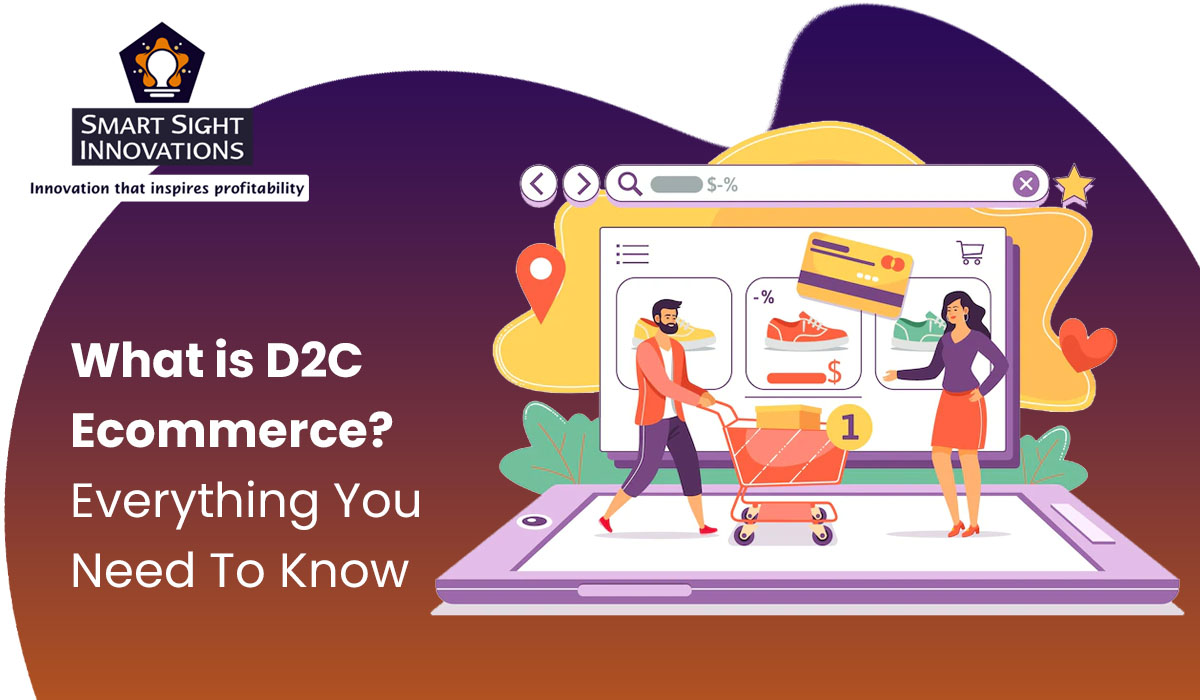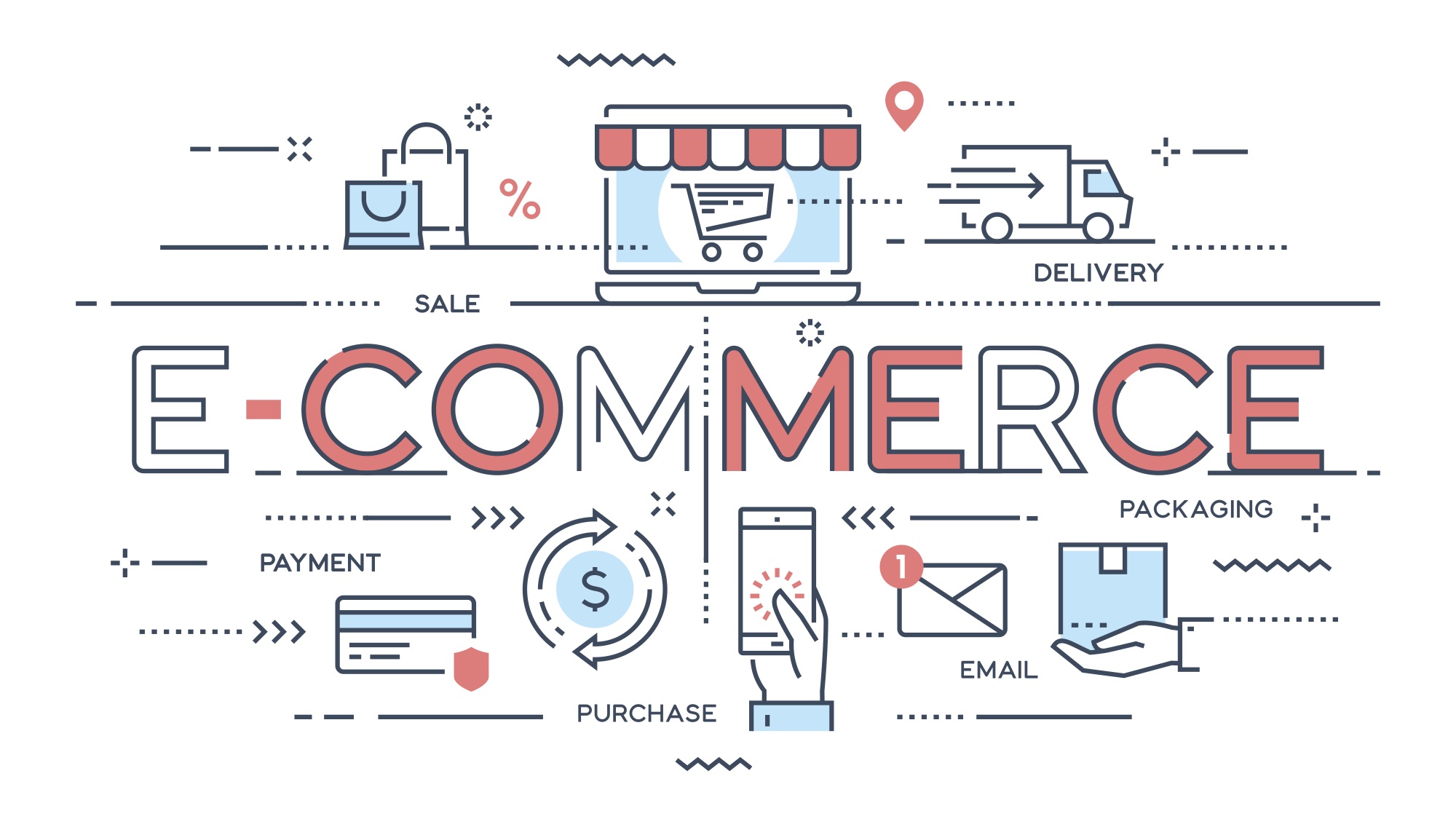Exploring the Potential of D2C Ecommerce: A Comprehensive Guide for Organizations
The D2C ecommerce version provides a significant change in just how brands involve with customers. It makes it possible for business to bypass traditional retail channels, cultivating deeper connections and possibly enhanced profit margins. However, this strategy is not without its complexities. Understanding the subtleties of D2C ecommerce is vital for brands aiming to flourish. What techniques can they take on to navigate this developing landscape properly? The solutions might redefine their organization techniques.
Understanding the D2C Ecommerce Version

Key Advantages of D2C Ecommerce for Brands
The D2C ecommerce model supplies brand names considerable benefits, specifically regarding enhanced earnings margins. By eliminating middlemans, firms can maintain a larger share of sales income. Additionally, this straight partnership with clients promotes enhanced brand name commitment, encouraging repeat purchases and long-term involvement.
Increased Earnings Margins

Boosted Brand Name Commitment
Building on the financial advantages of D2C ecommerce, improved brand loyalty becomes one more essential advantage for business involving straight with customers. By developing a straight connection, brand names can foster deeper partnerships with their clients, acquiring insights into habits and choices. This direct interaction enables for even more customized marketing methods, which reverberate highly with consumers. In addition, brands have the chance to manage their messaging and client experience, reinforcing brand name values and building depend on. When customers really feel a personal connection, they are more most likely to return, advocate for the brand, and participate in community engagement. Eventually, improved brand commitment not just drives repeat acquisitions however additionally grows an enthusiastic consumer base, further solidifying a brand's position in the marketplace.
Difficulties Dealt With by D2C Brands
D2C brand names come across several significant challenges that can influence their success. Inventory monitoring concerns can bring about stock lacks or excess, complicating operations and customer satisfaction. Furthermore, advertising and marketing budget plan restrictions usually restrict the ability to efficiently involve and get to target market.
Supply Administration Issues
Reliable supply administration presents an awesome challenge for several brand names running in the direct-to-consumer (D2C) room. These brand names typically come to grips with rising and fall need, which can result in overstock or stockouts, inevitably influencing consumer satisfaction and profits. In addition, the absence of innovative supply radar can lead to discrepancies in between real stock levels and reported data, complicating order gratification. The varied variety of products D2C brands commonly provide also complicates inventory administration, as variants in colors, sizes, and styles call for even more meticulous oversight. Furthermore, numerous D2C companies may have problem with minimal warehousing abilities, causing ineffective use of space and resources. As a result, reliable stock monitoring stays a crucial obstacle for D2C brands intending for sustainable development and operational performance.
Advertising Spending Plan Constraints
Steering advertising budget restrictions is a significant difficulty for many direct-to-consumer (D2C) brand names. Limited funds often limit these firms' capacity to buy comprehensive marketing methods, resulting in decreased exposure in an open market. D2C brands often come to grips with the requirement to make the most of roi (ROI) while targeting particular audiences efficiently. This difficulty is exacerbated by increasing costs in digital marketing and the necessity to allot funds across several networks, consisting of social media sites, internet search engine, and email advertising and marketing. As a result, many D2C brands must introduce economical advertising services, leveraging organic growth methods and influencer collaborations. Eventually, successfully maneuvering these budget constraints is vital for sustaining development and accomplishing lasting earnings in the advancing ecommerce landscape.
Techniques for Building an Effective D2C Ecommerce Organization
As customers increasingly seek straight connections with brands, establishing an effective D2C ecommerce organization requires a tactical method that prioritizes customer interaction and trust. One reliable approach is to develop compelling brand narratives that reverberate with target market, cultivating emotional connections. Using social networks systems can improve presence and promote two-way interaction, allowing brand names to involve directly with customers.Moreover, individualized experiences with tailored marketing initiatives can significantly improve client retention and loyalty. Carrying out commitment programs and providing unique bargains can additionally incentivize repeat purchases.Streamlining the buying process is vital, guaranteeing an easy to use user interface that improves the shopping experience. Additionally, transparent interaction relating to delivery and returns constructs depend on and motivates customer confidence.Finally, proactively looking for consumer responses and responding to it shows a dedication to enhancement and consumer complete satisfaction, critical components in the competitive D2C landscape.
Leveraging Innovation for Enhanced Consumer Experience
In today's affordable D2C ecommerce landscape, modern technology plays a crucial role fit customer experiences. click over here Businesses significantly utilize advanced devices such as expert system, chatbots, and customized algorithms to enhance communications and improve the buying procedure. By integrating these modern technologies, brand names can offer customized product suggestions based on private choices and purchasing behaviors, promoting a more interesting experience.Moreover, receptive web site styles and mobile applications guarantee that clients can access services effortlessly throughout different devices. Enhanced repayment solutions, consisting of one-click checkouts and electronic budgets, better simplify purchases, making it simpler for consumers to make purchases.Data analytics likewise enables companies to gather understandings into consumer actions, permitting for continuous enhancement of offerings and services. Generally, leveraging innovation not just improves customer fulfillment yet additionally grows commitment, inevitably driving lasting success in the D2C ecommerce field.
Advertising Methods to Drive D2C Sales
Just how can brand names effectively record the focus of customers in a saturated market? To prosper in the direct-to-consumer (D2C) landscape, brands must utilize targeted advertising strategies. Utilizing social media platforms, brand names can involve consumers through interactive material, influencer partnerships, and user-generated messages. Personalized email campaigns can likewise promote a sense of link, providing customized promotions based on customer habits and preferences.Moreover, narration plays a vital duty in distinguishing a brand name's narrative, making it relatable and unforgettable. Brand names need to purchase search engine optimization (SEO) to boost exposure, guaranteeing their items are conveniently visible online. In addition, leveraging data analytics permits organizations to fine-tune their advertising and marketing techniques and recognize consumer patterns much better. Inevitably, a multi-channel approach that incorporates creativity with data-driven understandings can greatly enhance D2C sales, permitting brands to stick out in a crowded industry.
Future Fads in D2C Ecommerce
With the fast development of innovation and consumer preferences, the future of D2C ecommerce is poised for significant improvement. Arising patterns show a change towards hyper-personalization, where brand names utilize information analytics to customize offerings to private consumer demands. This modification improves client experiences, cultivating commitment and engagement.Moreover, sustainability is coming to be a necessary factor, with consumers progressively preferring brands that prioritize environment-friendly methods - D2C Ecommerce Agency. Firms are expected to adopt clear supply chains and lasting materials to satisfy this demand.The integration of expert system and boosted truth will in addition reinvent the shopping experience, permitting customers to picture products in their settings before acquisition. Furthermore, social commerce is prepared for to grow, as systems like Instagram and TikTok assist in smooth purchasing experiences straight within social media.These patterns jointly indicate a vibrant future for D2C ecommerce, emphasizing customer-centric methods and innovative innovations that redefine customer communications
Regularly Asked Questions
What Industries Benefit A Lot Of From D2C Ecommerce?
The present concern highlights markets that flourish with direct-to-consumer (D2C) ecommerce. Remarkably, style, beauty, electronics, and food industries take advantage of D2C models to enhance brand loyalty, enhance customer relationships, and maximize you can look here revenue margins effectively.
Just How Do Delivering Prices Affect D2C Pricing Techniques?
Delivering prices greatly webpage influence D2C pricing techniques. Companies should stabilize these expenses with competitive rates, thinking about customer assumptions and earnings margins. Efficient monitoring of delivery can enhance consumer contentment and drive sales in direct-to-consumer versions.
What Settlement Options Should D2C Organizations Offer?
D2C companies should offer varied settlement choices, including credit/debit cards, electronic pocketbooks, and purchase now, pay later on services. This range enhances consumer benefit, enhances conversion prices, and deals with various consumer choices in the online buying landscape.
How Can D2C Brands Take Care Of Customer Returns Successfully?
D2C brand names can take care of client returns properly by executing straightforward return policies, supplying prepaid shipping tags, and making certain timely reimbursements (D2C Ecommerce Agency). Clear interaction and structured procedures enhance client satisfaction and motivate repeat service
What Lawful Considerations Exist for D2C Ecommerce Workflow?
Lawful considerations for D2C ecommerce operations include conformity with customer defense legislations, data personal privacy laws, intellectual property rights, and tax demands. Brand names need to browse these intricacies to prevent lawful risks and assure smooth procedures. By removing middlemans, D2C brand names can offer competitive rates and cultivate a much more intimate partnership with their customers.The D2C version is identified by its dependence on electronic systems, enabling brand names to make use of social media, on the internet marketplaces, and their very own web sites to engage with consumers straight. D2C ecommerce helps with the collection of useful client data, enabling brands to customize their offerings and advertising and marketing strategies effectively, ultimately driving sales and raising margins. Additionally, brand names have the possibility to regulate their messaging and consumer experience, strengthening brand worths and constructing trust fund. As customers progressively seek straight connections with brand names, establishing an effective D2C ecommerce business needs a critical technique that focuses on consumer involvement and count on. D2C brands can take care of consumer returns successfully by applying straightforward return plans, using pre-paid delivery labels, and guaranteeing prompt refunds.